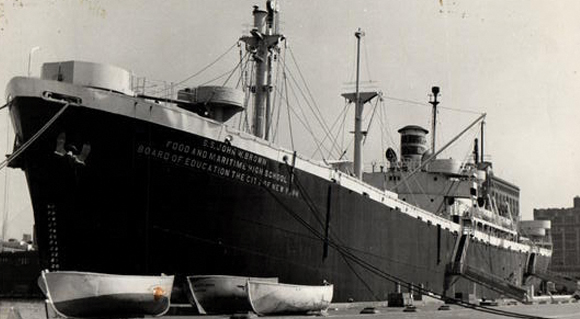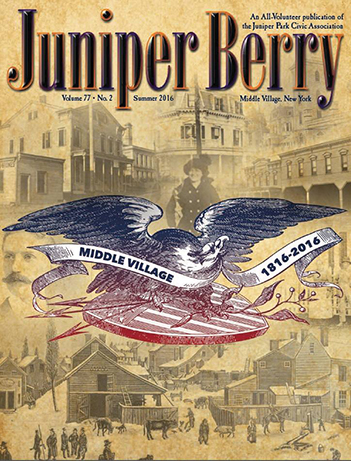Great Britain had been fighting Germany for over two years when Japan’s attack on Pearl Harbor on Dec.7, 1941 and Germany’s declaration of war on the United States four days later finally forced the U.S. into World War II. Up until then a powerful isolationist sentiment had restrained our involvement. Thirteen months before Pearl Harbor, in Nov. 1940, Franklin D. Roosevelt was elected to a third term as president. The war in Europe had been going on for more than a year, and Hitler had overrun Poland, Denmark, Belgium, Netherlands and France, and was subjecting Britain to merciless bombings. U.S. neutrality laws in force stipulated that U.S. merchant ships could not carry arms nor could investors lend money or give credit to the countries involved in the fighting. Shortly after he was elected, Roosevelt proposed the Lend-Lease Act, which after much debate was passed. This allowed the government and private firms to lend or lease military equipment to Britain and the other Allies. The biggest problem getting the supplies across the ocean was that there were far too few merchant ships and their number was constantly being reduced by German U-boats. Between the beginning of the war in Sept. 1939 and the entry of the U.S. in Dec. 1941 German U-boats sank 882 ships in the North Atlantic, and in 1942 the United States’ first full year at war they sank 1,006 ships and over 7,000 men lost their lives.
The Liberty Ship is born
President Roosevelt decided that a new program had to be developed to build ships faster than the German U-boats could sink them. The design chosen called for a relatively uncomplicated ship that could be quickly mass produced. The ships would be called Liberty Ships and over 2,700 were built in shipyards across America. They were 441’ long and 57’ wide and could carry almost 9,000 tons of food, fuel, planes, tanks and some were fitted to carry up to 650 troops. They had a crew of 45 civilian merchant seamen and 41 Naval Armed Guards to man the defensive weapons which consisted of a 5’ cannon on the stern, a 3’ cannon on the bow and eight 20mm anti-aircraft guns. Top speed was only 11 knots but they were going to travel in protected convoys across the Atlantic.
The first Liberty Ship, the SS Patrick Henry, was launched Sept. 27, 1941 and President Roosevelt attended the ceremonies. The SS John W. Brown was launched in Baltimore on Sept.7, 1942. It had only taken 54 days to build and was named after a union organizer of miners and shipyard workers who had just died in an accident. The Brown then proceeded to New York for the first of its many voyages that took supplies and troops to many ports all over the world. The Port of New York alone saw 21,459 clearances and 1,464 convoy departures. It was not uncommon for 100 ships to be in a convoy with only 200 to 300 yards separating each ship which in itself was dangerous with storms and the attacks of German U-boats that sank over 200 Liberty Ships.
An important part of history
On one voyage the Brown arrived in Naples on May 8, 1944 loaded with 3,332 tons of high explosives and gasoline. After unloading, the Brown delivered troops to Anzio where the Americans had established a beachhead but was unable to break out because of heavy bombardment from German planes and artillery. On May 23 the Allies finally broke out of the beach-head and were able to capture Rome on June 4, 1944. The Brown was very busy bringing supplies to various Ports in Italy and North Africa and even carried POWs. On Aug. 15 the ship joined with Allied forces and delivered men and supplies for the invasion of southern France. The Brown was even credited with downing a German plane in the invasion.
The John Brown continued carrying cargo and troops right up until the end of the war and after brought supplies to a devastated Europe. On her 13th and final voyage she left New York on Aug. 9, 1946 for Houston and arrived in England. After departing London on Nov. 15, 1946 she arrived back in New York and the Brown’s seagoing career had ended. The Brown had been given orders by the War Shipping Administration to be turned over to NYC Board of Education to be used as a school ship for teaching high school students the maritime trades.
New life for the John W. Brown
I attended Junior High School 73 in Maspeth and in our senior year when it came time to apply to a high school I felt that the academic life was not for me. I had enjoyed the classes in metal, wood, electrical and print shop that I took so when I saw the booklet of vocational schools and spotted the John Brown which was part of Food and Maritime Trades HS I knew this would be my choice. I had grown up with stories from my father who was in the Navy in WWll and my one grandfather who was in the merchant marine and my other who worked at the Brooklyn Navy Yard during the war so a sea going life would be my calling.
When I started school in Sept. 1964 the Brown was docked on Pier 73 on the East River near 23rd Street. Students were either in the Deck, Engine or Steward Depts. and all our instructors were licensed Captains and Engineers. We wore khaki uniforms to and from school and when working we wore blue work clothes. I was in the Deck Dept. and we learned seamanship, navigation, how to splice rope and heavy wire, sew canvas, work the booms to load and unload cargo, how to row and sail small boats, how to work aloft in a bosun chair or work over the side on a stage. We also did lots of painting and scraping, something that must be done continuously on a ship. It was hard dirty work but it was also lots of fun for a young guy. Students in the Engine Dept. learned how to operate and maintain the engine and all its components and the Steward Dept. learned how to prepare and serve food to students something very important on any ship. Later the Brown was moved to Pier 42 on the Hudson River and I had the privilege of being chosen for the crew. We had a great view of New York Harbor and in those days it was quite busy with ocean liners, freighters and barges. When we graduated, the school got us jobs in shipping companies and tugboat companies and some became stationary engineers.
The John Brown was a school ship from 1946-1982 when the city decided that the Brown cost too much to maintain and was to be sent to the reserve fleet. There were efforts to keep it in NYC but plans fell through. It was then that a dedicated group of volunteers decided to bring her back to Baltimore, where she was built, and make her operational and sail again. In July 1988 she was towed to Baltimore and after lots of hard work from many volunteers – many of them WWII veterans of the merchant marine and Navy – they got her sailing again in Sept. 1990. They have been to many ports on the eastern seaboard as well as the Great Lakes. There is one other operating Liberty Ship – the SS Jeremiah O’ Brien in San Francisco.
Arriving in New York City
On Sept. 9, 2016 the Brown will be arriving in NYC and be open for visitors daily from Sept. 10-17, from 10:00am to 5:00 pm. On Sept. 18 there will be a Living History Cruise. For more information visit Project Liberty Ship at www.ssjohnbrown.org or their Facebook page.
Credits to Sherod Cooper; Baltimore’s Living Liberty




